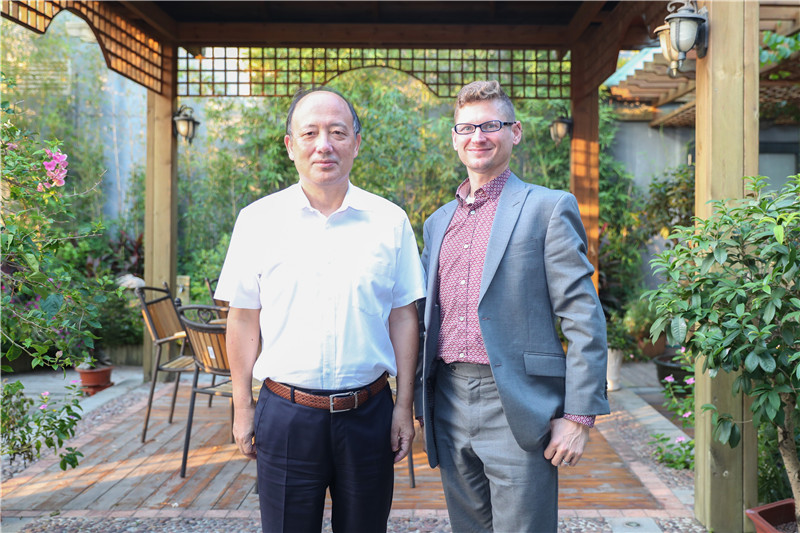Late September saw SUSTech graced with the presence of Physical Science Associate Editor at Science Brent Grocholski. He came at the invitation at Dr. He Jiaqing, Vice-Dean of the College of Sciences and Chair of the Physics Department at SUSTech. He spoke with the University President Chen Shiyi, Vice President Tang Tao, Director of the Office of Research Zhao Yusheng and Dean of the College of Sciences Yang Xueming. Brent Grocholski also took the opportunity to visit the University’s Cryo-Electron Microscopy Laboratory and the Pico Center.

After his discussions with university leadership, he gave a wonderful lecture about Scientific Publishing from Inside Out, to a packed theatre of students and faculty members. Dr. He Jiaqing was kind enough to host the lecture.
During the lecture, Grocholski told the audience that peer review and scientific publishing are the shared social responsibilities of researchers, critics and publishers, maintaining the integrity of science and implementing accountability. When it comes to Science’s 92% rejection rate, Grocholski emphasized that refusal is an important part of scientific publishing. It does not mean that the paper is not good enough, but it is not suitable for this kind of journal.
He went over what he does and the types of articles that Science is looking for. Grocholski said that his job is mostly about finding the best manuscripts to publish. He also has to design and collect works for special topics, attend top conferences and institutions, edit manuscripts based on supported comments, and interact with journalists, production, and art. In terms of the sort of articles that Science is typically looking for, they look for articles that take big steps forward. If the articles are making transformations, have a wide range of applications; provide new results, or a story for a four-page journal, he viewed them as potentially worthy of submission.

He encouraged the audience to ask themselves before considering, “Is there any convincing data and analysis? Is it suitable for the journal? What are the requirements of the sponsors and the data policies of the journals? Will it be of interest to scientists in other fields? Will it subvert the traditional view?“
The teachers and students on the scene were deeply attracted by his humorous enthusiastic speech. After the lecture, Grocholski answered the questions of teachers and students one by one.
Q: How did you change from a scientific researcher to an editor? What is the difference between editing and research in Science magazine?
A: The biggest difference between editing and research is that I spend a lot of time reading the manuscript and screening out what the magazine will publish. I don’t have time to participate in any experimental projects or scientific research.
Q: Have you encountered any difficulties in dealing with such multidisciplinary knowledge?
A: I think the biggest difficulty is learning and understanding new knowledge. Whenever I have a problem, I will turn to the top researchers in the industry for help.
Q: In many requirements, what do you value most when screening papers?
A: The most important point is that in the handwritten manuscript, the authors show their love for this research. The most competitive papers often come from an author who really loves them.
Proofread ByXia Yingying
Photo ByStudent News Agency Cao Ruozhen